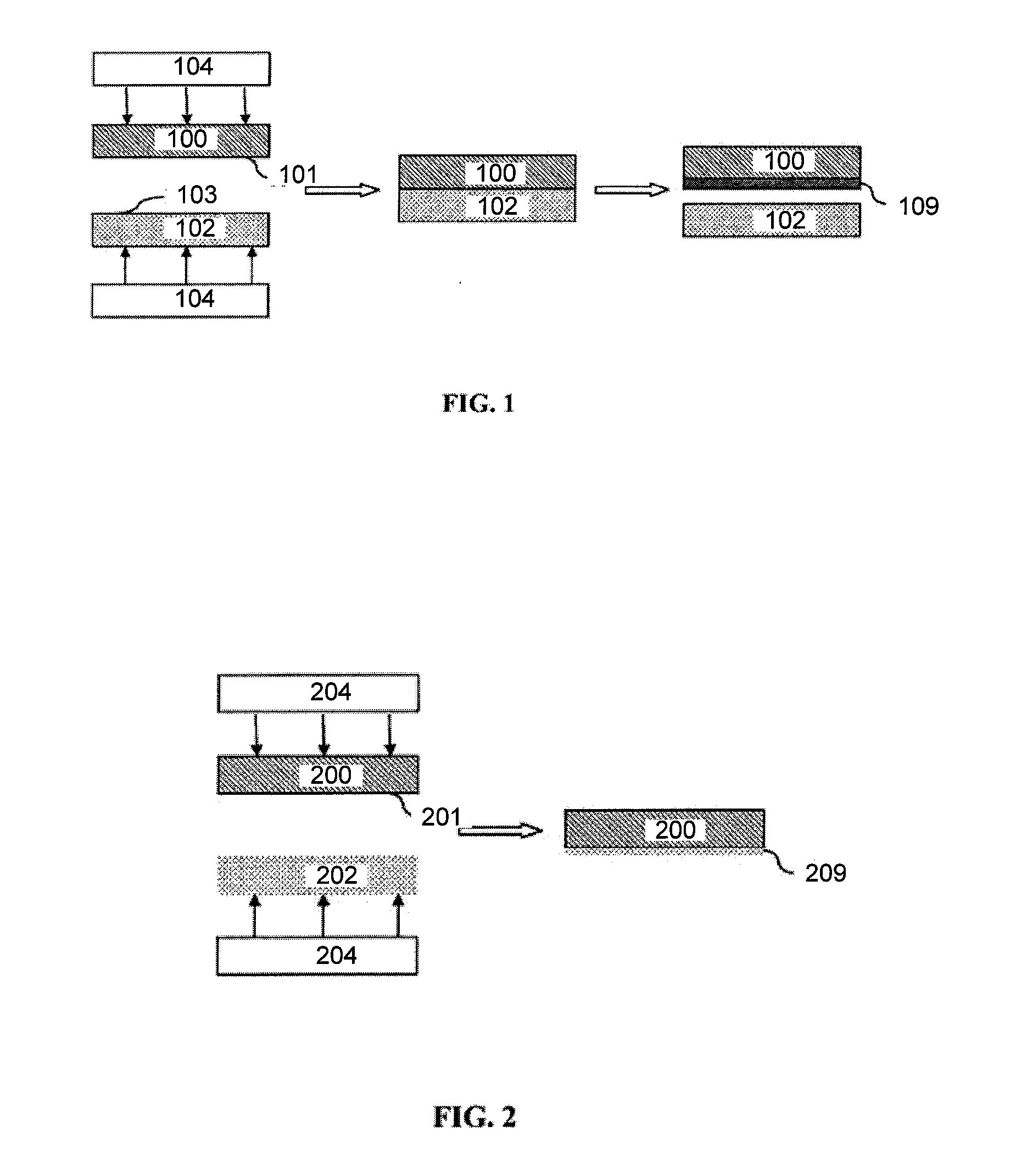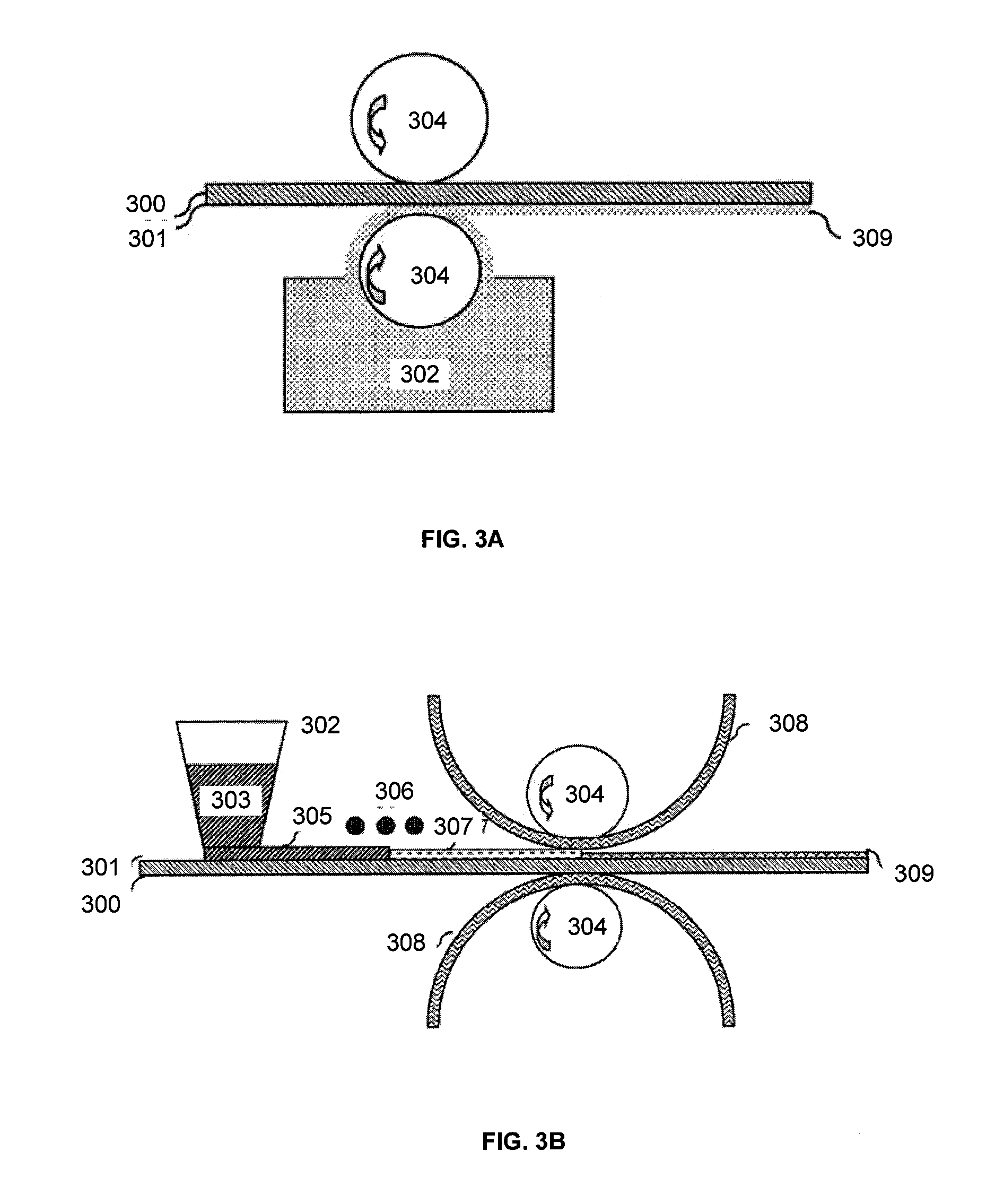Flexible fabric having superhydrophobic surface
a flexible fabric and superhydrophobic technology, applied in the field of polymers with superhydrophobic surfaces, can solve the problems of reducing the surface hydrophobicity, permanent loss of its superhydrophobicity, and artificial superhydrophobic surfaces suffering from poor mechanical and/or chemical stability, and achieves simple, low-cost process, excellent mechanical properties
- Summary
- Abstract
- Description
- Claims
- Application Information
AI Technical Summary
Benefits of technology
Problems solved by technology
Method used
Image
Examples
example 1
Fabricating Polymer Sheets Having a Superhydrophobic Surface by Using a Template
[0158]Materials, methods and surface fabrication: A commercially available thermoplastic sheet of low density polyethylene (LDPE) manufactured by Berry Plastics (Evansville, Ind.) from 97% recycled polyethylene, 2% calcium carbonate and 1% slip oleamide and sold through McMaster-Carr was used as the polymer substrate. The thickness of the LDPE film was 100 micrometers and 10 layers of the LDPE film were used at each time to make free-standing superhydrophobic sheets that were approximately 1 mm thick. The polymer film softens at 106° C. and melts over the range from 1 13-120° C. Three types of stainless steel mesh (i.e., M1, M2, and M3) and one type of nylon mesh (i.e., M4) (all from McMaster-Carr) with different wire diameters and pore sizes were used as templates. The structures and details of the mesh are shown in Table 1 below.
TABLE 1Parameters of mesh templates for fabricatingsuperhydrophobic surfac...
example 2
Hybrid Superhydrophobic Polymer Composite Materials with Enhanced Photocatalytic Properties for Self-Cleaning and Water Droplet Purification
[0194]A hybrid photocatalytic-superhydrophobic surface was fabricated using Method 1 described above. An industrial ultra-high molecular weight polyethylene (UHMW PE) from McMaster-Carr with a thickness of 0.8 mm and a melt point of about 130° C. was used. SiO2 nanoparticles (Cabot TS-530) with an average agglomerate particle size of 200-300 nm were dispersed in a mix solution of 70% methanol and 30% water, and the concentration of the SiO2 was adjusted to be about 5%. The concentration of SiO2 particles was 5%. TiO2 nanoparticles (Evonik, P90) with an average diameter of about 14 nm was used as photocatalyst. A steel mesh with a pore size of 309 micrometer and a wire diameter of 114 micrometer was coated with the silica particle dispersion. The silica particles were coated onto the UHMWPE sheet using a Doctor Blade with a gap of 0.006″ and drie...
example 3
Photocatalytic Polymer Composite Materials for Waste Water Purification and Drinking Water Disinfection
[0201]This example is intended to illustrate how such a material could be used for the photo-oxidation of an organic dye for water purification.
[0202]An industrial ultra-high molecular weight polyethylene (UHMW PE) from McMaster-Carr with a thickness of 0.02 inch and a melt point of about 130° C., a layer of TiO2 nanoparticles (P90, from Evonik) with a thickness of about 14 nm and two smooth caul plate are assembled and laminated at 500 psi, 310 F for 30 min using the lamination process described in our previous invention (FIG. 2, Lyons, A. M. and Xu, Q. F. Polymers Having Superhydrophobic Surface, 27541-0062WO1, filing date Feb. 28, 2012). After lamination, excess TiO2 nanoparticles were removed by rinsing with tap water and blow the surface dry with compressed air. No mesh was used to create large scale roughness.
[0203]An optical image and AFM images showing the three-dimensional...
PUM
| Property | Measurement | Unit |
|---|---|---|
| diameter | aaaaa | aaaaa |
| length | aaaaa | aaaaa |
| length | aaaaa | aaaaa |
Abstract
Description
Claims
Application Information
 Login to View More
Login to View More - R&D
- Intellectual Property
- Life Sciences
- Materials
- Tech Scout
- Unparalleled Data Quality
- Higher Quality Content
- 60% Fewer Hallucinations
Browse by: Latest US Patents, China's latest patents, Technical Efficacy Thesaurus, Application Domain, Technology Topic, Popular Technical Reports.
© 2025 PatSnap. All rights reserved.Legal|Privacy policy|Modern Slavery Act Transparency Statement|Sitemap|About US| Contact US: help@patsnap.com



